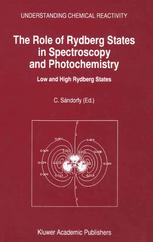

Most ebook files are in PDF format, so you can easily read them using various software such as Foxit Reader or directly on the Google Chrome browser.
Some ebook files are released by publishers in other formats such as .awz, .mobi, .epub, .fb2, etc. You may need to install specific software to read these formats on mobile/PC, such as Calibre.
Please read the tutorial at this link: https://ebookbell.com/faq
We offer FREE conversion to the popular formats you request; however, this may take some time. Therefore, right after payment, please email us, and we will try to provide the service as quickly as possible.
For some exceptional file formats or broken links (if any), please refrain from opening any disputes. Instead, email us first, and we will try to assist within a maximum of 6 hours.
EbookBell Team

0.0
0 reviewsThe aim of this volume is to offer a balanced overview of molecular Rydberg spectroscopy as it has developed over recent decades. Recent evolution has split Rydberg spectroscopy into two apparently distinct fields: the one concerns the low (n=3-5) Rydberg states, the other the very high (typically n>150) Rydberg states. The former is aimed at spectral levels where Rydberg, valence-shell, and intermediate-type states interact, with a variety of photochemical consequences. The latter considers states extremely close to the ionization limit, from whereionization is possible with a very slight amount of additional energy. Recently developed techniques make it possible to produce ions in well-defined electronic, vibrational and rotational states, including states resulting from spin-orbit or Jahn-Teller splitting. It is then possible to study the structure and reactions of such state-selected ions as well as those of the corresponding neutral molecules. These techniques amount to badly needed high resolution photoelectron spectroscopy.